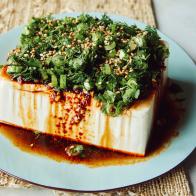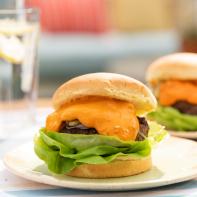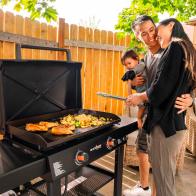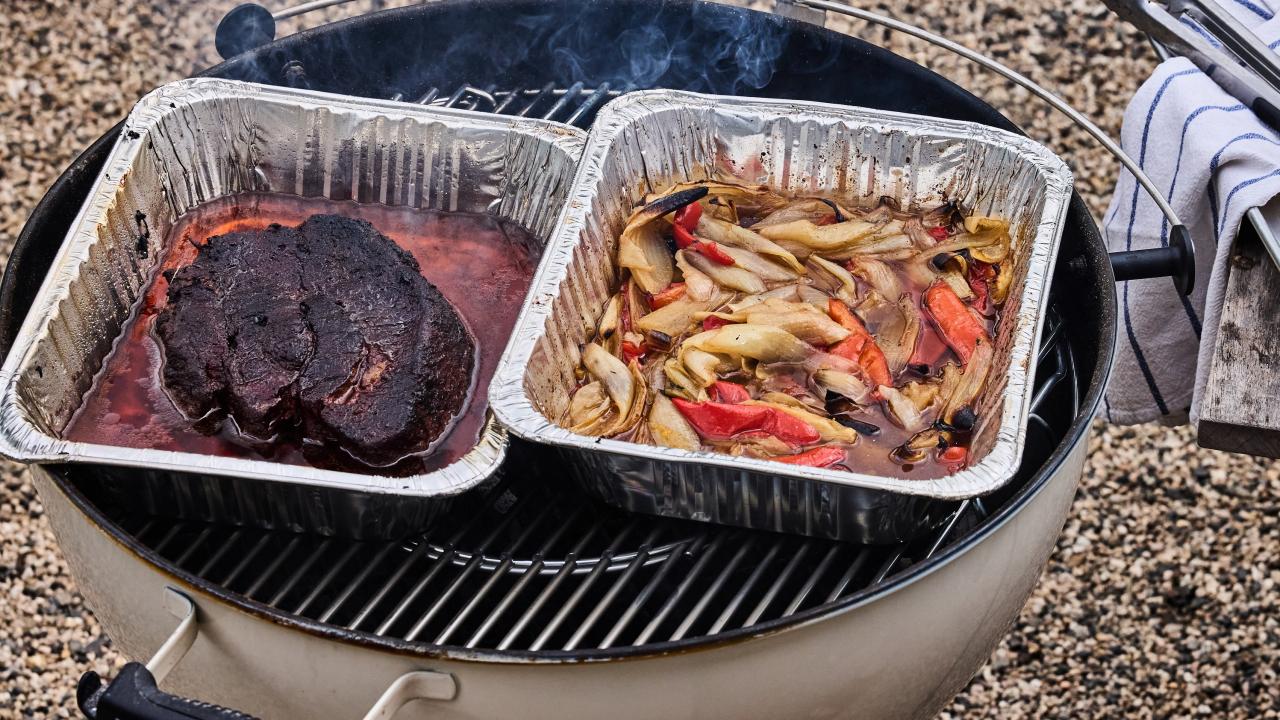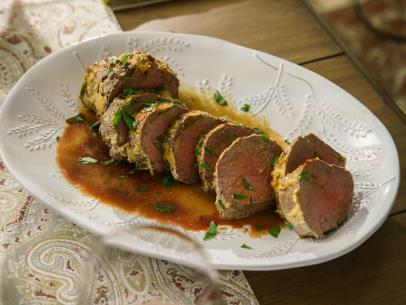Smoked Beef Chuck Roast with Peppers and Onions
- Level: Advanced
- Total: 8 hr 45 min
- Active: 7 hr
- Yield: 8 to 10 servings
-
- Nutritional Analysis
- Per Serving
- Serving Size
- 1 of 10 servings
- Calories
- 346
- Total Fat
- 24 g
- Saturated Fat
- 9 g
- Carbohydrates
- 8 g
- Dietary Fiber
- 2 g
- Sugar
- 3 g
- Protein
- 26 g
- Cholesterol
- 83 mg
- Sodium
- 687 mg
- Level: Advanced
- Total: 8 hr 45 min
- Active: 7 hr
- Yield: 8 to 10 servings
-
- Nutritional Analysis
- Per Serving
- Serving Size
- 1 of 10 servings
- Calories
- 346
- Total Fat
- 24 g
- Saturated Fat
- 9 g
- Carbohydrates
- 8 g
- Dietary Fiber
- 2 g
- Sugar
- 3 g
- Protein
- 26 g
- Cholesterol
- 83 mg
- Sodium
- 687 mg
Ingredients
Beef:
Peppers and Onions:
Directions
Special equipment:
charcoal chimney, wood chips for smoking (any type you like, such as apple, oak, hickory, etc.); two 8-by-10-inch disposable aluminum pans or grill-safe pans- For the beef: Remove the roast from the refrigerator 1 hour before you light the grill. Combine the paprika, cumin, garlic powder, 2 teaspoons kosher salt and 1 teaspoon black pepper in a small bowl and rub it all over the beef. Let sit at room temperature for 1 hour.
- Soak a few big handfuls of wood chips in water for 30 minutes to 1 hour. Pour 1 cup of the broth into a clean spray bottle.
- Light a charcoal chimney starter full of briquettes. Once they’re ashed over, 15 to 20 minutes, spread them to one side of a charcoal grill. Close the lid and wait until the temperature stops going up. It should be about 225 degrees F, if not, move the coals around or add or remove coals to get the correct temperature. Drain a small handful of chips and scatter them over the coals Place the grill grate over the coals and place the meat on the opposite side of the coals.
- Smoke the meat, adding more briquettes and chips as needed to maintain 225 degrees F, until an instant-read thermometer inserted into the thickest part of the roast reads 165 degrees F, 4 to 6 hours (see Cook’s Note). Each time you add coals, quickly spray the meat with broth and turn it over.
- For the peppers and onions: Scatter the peppers and onions in an 8-by-10-inch disposable aluminum pan or other grill-safe pan. Sprinkle them with the paprika, cumin, garlic powder, 1 1/2 teaspoons salt and several grinds of pepper. Drizzle with the olive oil and broth and toss well.
- Fill another 8-by-10-inch disposable aluminum pan or other grill-safe pan with the remaining 2 cups stock. When the meat reaches 165 degrees F, quickly place it in the tin and wrap the top tightly with foil. Add enough coals to get the grill temperature to 250 degrees F and place the meat in the tin on the opposite side of the coals. Place the peppers and onions over the coals. You no longer need to add chips, just coals, to keep the temperature at 250 degrees F. Continue to cook until the meat reaches 200 to 203 degrees F; the meat should be so tender that you can stick a knife in it with little resistance. The timing will vary, but it can take anywhere from another 3 to 4 hours. Rewrap the tin well every time you check the meat. When you add coals, stir the peppers and onions and cook them until they are very tender, adding a little stock if they begin to burn; the peppers and onions may be done before the meat.
- Once the meat reaches 200 to 203 degrees F, remove the pan from the grill and let it stand, still wrapped, for 30 minutes.
- To serve, unwrap the meat and reheat it if needed. Shred the meat with 2 forks and serve it with the juices and with the peppers and onions.
Cook’s Note
As with any recipe using live coals and smoke, there are lots of variables in how long it will take your food to cook: The temperature outside, the size of your grill and how many times you open the grill are a few of the factors that will affect cooking time. Let your instant-read thermometer and the texture of the finished meat be your guide. It’s important to get the meat to 165 degrees F in the first stage. It may sit between 155 and 165 degrees F for a long time; this is normal (it’s sometimes called the stall period) so be patient. In the second cooking stage, the temperature should climb to at least 200 degrees F and the beef should be so tender a knife goes in with no resistance.


